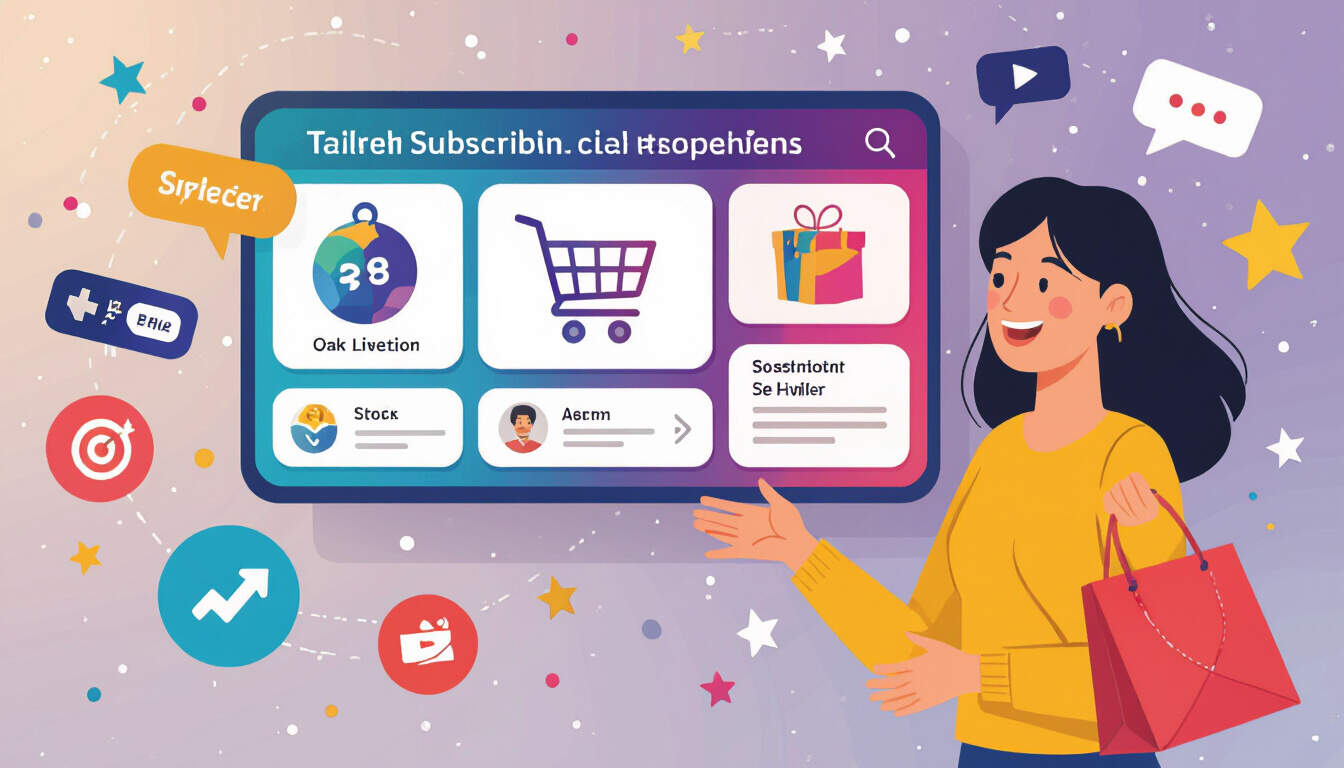Micro-Subscription Personalization Algorithms and Their Role in Small Business Growth
 by Lilian Nienow
by Lilian Nienow
Micro-subscription models use personalization algorithms to tailor services for customers, helping small businesses boost retention and revenue. This approach offers practical strategies for e-commerce owners to adapt offerings based on user data, leading to sustainable growth and better engagement.

Micro-subscriptions have emerged as a key strategy in e-commerce, allowing businesses to offer products or services in small, affordable packages. These models focus on regular, low-cost payments that keep customers engaged over time. For small business owners, integrating personalization algorithms into this setup can make a significant difference in customer satisfaction.
Personalization algorithms analyze user behavior and preferences to customize offerings. In the context of micro-subscriptions, these tools suggest options that match individual needs. For instance, a coffee shop might use data from past orders to recommend specific blends each month. This level of customization helps build loyalty among customers.
One benefit is improved retention rates. By delivering relevant content or products, businesses can reduce churn. Personalization algorithms play a crucial role here, as they process data in real-time to adjust subscriptions. Entrepreneurs often see higher repeat purchases when users feel their choices are understood.
Implementing these algorithms doesn't require extensive resources. Small businesses can start with basic tools like email marketing software that tracks interactions. For example, an online bookstore could use simple algorithms to send personalized book recommendations based on reading history. This method ensures that micro-subscriptions remain appealing without overwhelming the customer.
Key Strategies for Adoption
To get started, businesses should first gather user data ethically. This includes tracking purchase patterns and feedback. Once collected, algorithms can segment users into groups. For e-commerce enthusiasts, creating targeted subscription tiers is essential. A fitness app, for example, might offer personalized workout plans through micro-subscriptions, adjusting based on user progress.
Another strategy involves testing and refining. Businesses can run trials with different algorithm settings to see what works best. Metrics like subscription renewal rates provide valuable insights. By focusing on these areas, owners can refine their approaches over time.
Challenges may arise, such as data privacy concerns. It's important to handle information securely to maintain trust. Small businesses can address this by being transparent about data use. Additionally, keeping algorithms simple avoids technical hurdles. The goal is to enhance the user experience without complicating operations.
Real-World Applications
In practice, many small businesses have succeeded with this model. A meal kit service, for instance, uses algorithms to suggest recipes based on dietary preferences. This not only increases satisfaction but also encourages longer subscriptions. E-commerce platforms benefit from higher average order values as a result.
For entrepreneurs, the financial aspect is appealing. Micro-subscriptions generate steady revenue streams. By incorporating personalization, businesses can upsell effectively. A beauty brand might offer customized product bundles, leading to increased sales through tailored suggestions.
Measuring Success
To evaluate effectiveness, track key performance indicators. Renewal rates and customer feedback are good starting points. Businesses should also monitor engagement levels, such as how often users interact with personalized content. Over time, these metrics help optimize algorithms for better results.
In summary, adopting personalization within micro-subscription frameworks offers clear advantages for growth. Small business owners and e-commerce enthusiasts can use these tools to foster stronger connections with customers. By applying thoughtful strategies, they position themselves for long-term success in a competitive market.
Tips for Getting Started
- Begin with essential data collection methods.
- Choose user-friendly algorithm tools.
- Regularly review and adjust based on performance.
- Focus on building trust through clear communication.
This approach not only supports business expansion but also creates value for customers, making it a worthwhile investment for those in the field.
